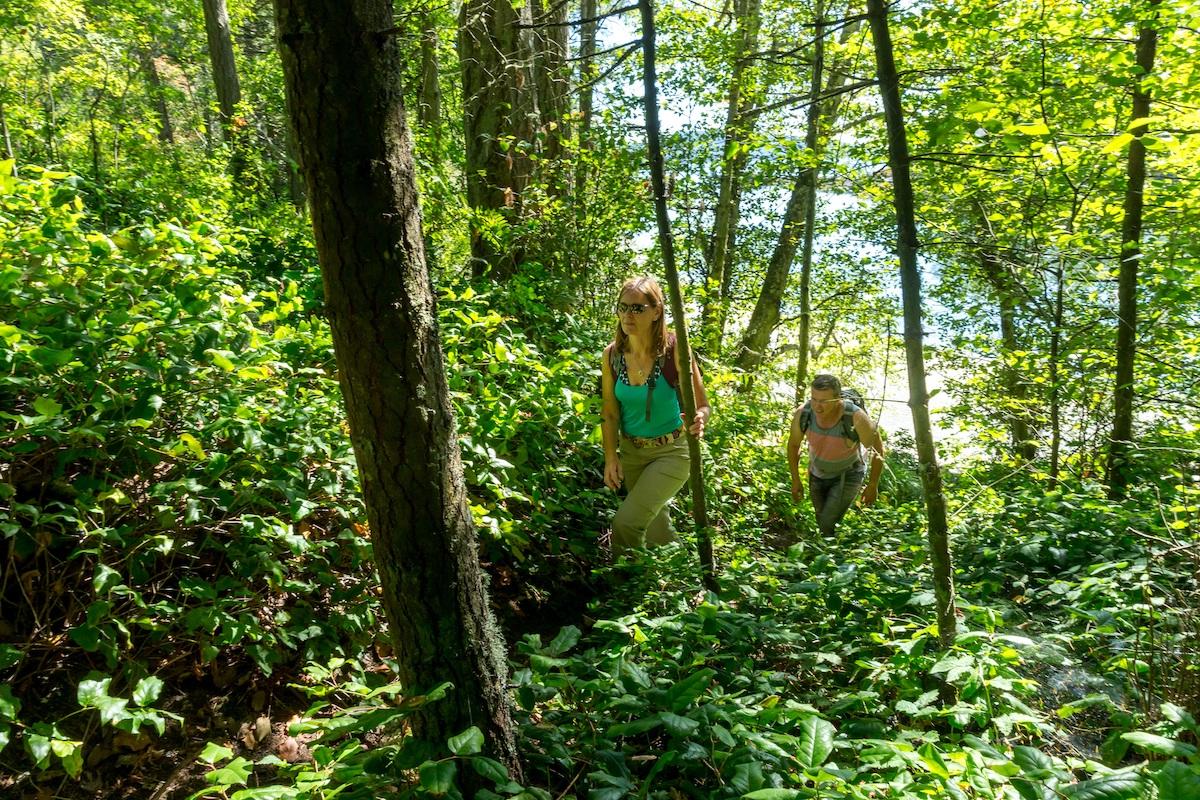
Invasive fallow deer abound on Sidney Island//Parks Canada
Parks Canada is seeking public input until June 17 on a plan to eradicate invasive deer on Sidney Island in Gulf Islands National Park Reserve to help save forests.
Sidney Island’s ecosystem, off the southeast coast of Vancouver Island, “is in a severely degraded state as a result of decades of over-browsing by invasive fallow deer” and so it’s recommending restoration and conservation activities, including the complete eradication of these deer.
Parks Canada spent one year on planning and engagement with partnering communities and organizations before launching this public engagement period. It must soon decide whether the proposed project is likely to cause significant adverse environmental effects.
A draft Detailed Impact Assessment is expected by late June and then the public will have another 30 days to offer feedback before Parks Canada makes its final decision.
Sidney Island is part of the unceded territory of Coast Salish First Nations. Parks Canada controls the northern portion of the island. The southern part is privately owned and includes Islands Trust Conservancy covenant lands.

The forest understory on Sidney Island has been heavily impacted by fallow deer/Parks Canada
The Gulf Islands are important for biodiversity conservation. In the southern Gulf Islands, the Coastal Douglas-fir biogeoclimatic zone is home to the highest plant diversity and overwintering bird diversity in British Columbia, including many unique plants and animals that aren’t found elsewhere in Canada and that have significant cultural importance to local Indigenous peoples.
The forested areas in the southern Gulf Islands are also at risk due to browse pressure from invasive fallow deer and hyper-abundant native black-tailed deer. European settlers introduced deer in the early 1900s for sport hunting. There are now an estimated 400 to 500 fallow deer on the island. Select deer enclosures have helped some native plants and shrubs rebound, but more significant measures are needed.
Decades of over-browsing “has significantly degraded the island ecosystem, resulting in less diverse bird communities, reduced shrub cover and decreased plant species richness when compared to other islands in the region,” reports Parks Canada.
“Significant efforts have been made over the last 40 years by Sidney Island residents to reduce the deer population to sustainable numbers. However, these extensive culling efforts in combination with research on the issue has led Parks Canada to conclude that the restoration of Sidney Island’s forest ecosystem is not feasible unless the fallow deer population is removed entirely.”

For comparison, this is a healthy forest understory on nearby Portland Island/Parks Canada
Parks Canada has been working with the Province of British Columbia, Island Trust Conservancy, Sallas Forest Strata (Sidney Island residents), W̱SÁNEĆ Leadership Council, Pauquachin First Nation and Cowichan Tribes.
The main goal of this project is to facilitate long-term recovery of the natural environment by eliminating a significant threat (intense over-browsing by fallow deer). Other objectives include:
• Facilitating the recovery of culturally important species and practices.
• Facilitating use and enjoyment of the Island, within the park reserve.
• Strengthening the relationship of the project partners to Sidney Island.

A deer enclosure on Sidney Island shows what a forest understory looks like without deer pressure/Parks Canada
The following eradication activities are being proposed and assessed:
• Aerial herding/hunting of fallow deer (dispatching firearms from a helicopter).
• Canine herding/hunting within fenced zones (setting up temporary fenced zones across the island and sequentially clearing each zone with a specialised canine hunting team, moving from the southern tip to the northern tip of the island).
• Bait stations (baiting select sites with sterile grains for the purpose of attracting deer to a location where they can be easily dispatched).
• Drop netting (baiting select sites and rigging an overhead net, which will be manually dropped from a distance for the purpose of trapping deer dispatching).
• Spotlighting / Forward-looking infrared (hunting at night with the use of bright lights and/or FLIR rifles to dispatch nocturnal deer).
• Shoreline hunting (dispatching firearms from a boat, targeting foraging deer along the shoreline, potentially at night).
• Sentinel deer (capturing, sterilising, and releasing select deer for the purpose of located other deer on island).
• Carcass management (harvesting and disposing of deer remains).
• Operational logistics (accommodating personnel facilities on site, transportation to/from dispatch sites, transporting to/from Sidney Island, storing equipment, etc.).
• Post-eradication (potential short-term and long-term impacts after fallow deer are removed from the ecosystem).
If the cull is approved, Parks Canada says trials are tentatively planned for January and February 2022. Full eradication is slated to run from September 2022 to May 2023. Both time slots ae when the park is closed to visitors.
To submit comments — which will all be considered public — or request a copy of the draft Detailed Impact Assessment report when it’s ready, email [email protected].

 Support Essential Coverage of Essential Places
Support Essential Coverage of Essential Places




Add comment